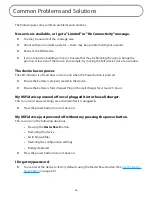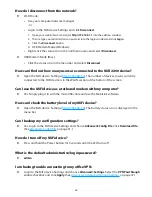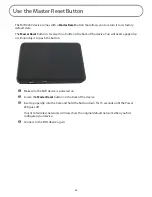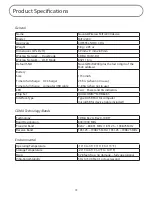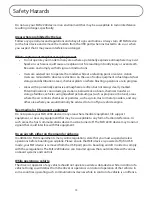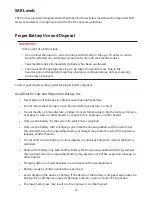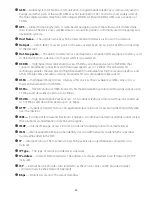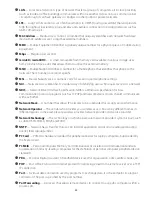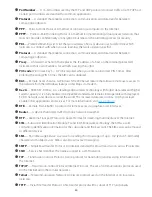
82
●
GSM
— Global System for Mobile communication. A digital mobile telephony system widely used in
Europe and other parts of the world. GSM was first launched in 1991 and is the most widely used of
the three digital wireless telephony technologies (TDMA, GSM, and CDMA). GSM uses a variation of
TDMA.
●
GPS
— Global Positioning System. A radio-based navigation system that allows users to determine
their location. The device uses satellite data to calculate its position. Commonly used in mapping and
navigation systems.
●
Host Name
— The unique name by which a network-attached device is known on a network.
●
Hotspot
— A Wi-Fi (802.11) access point or the area covered by an access point. Used for connecting
to the Internet.
●
Hot-Swappable
— The ability to safely remove and replace a component (for example, a memory card
or USB device) from a device or computer while it is powered on.
●
HSDPA
— High Speed Downlink Packet Access. HSDPA is an enhanced version of WCDMA that
supports broadband connections with download speeds up to 7.2 Mbps. This enhanced 3G
technology enables the download of high-bandwidth multimedia files, high resolution graphics, and
other complex files, and allows viewing email attachments at broadband-like speeds.
●
HSPA
— High Speed Packet Access.
A family of 3G services that is available to GSM carriers. It is a
major enhancement from WCDMA.
●
HSPA+
— HSPA Evolution or HSPA Evolved. A 3G mobile telephony protocol with up-link speeds up to
11 Mbps and downlink speeds up to 42 Mbps.
●
HSUPA
— High Speed Uplink Packet Access.
A 3G mobile telephony protocol with up-link speeds up
to 5.76 Mbps and downlink speeds up to 7.2 Mbps.
●
HTTP
— Hypertext Transfer Protocol. An application-level protocol for accessing the World Wide Web
over the Internet.
●
IEEE —
Institute of Electrical and Electronics Engineers. An international technical/professional society
that promotes standardization in technical disciplines.
●
IMAP
— Internet Message Access Protocol. An Internet standard protocol for email retrieval.
●
IMSI
— International Mobile Subscriber Identity. Used in GSM networks to identify the subscriber
Usually embedded in the SIM.
●
IP
— Internet Protocol. The mechanism by which packets are routed between computers on a
network.
●
IP Type
— The type of service provided over a network.
●
IP address
— Internet Protocol address. The address of a device attached to an IP network (TCP/IP
network).
●
ISP
— Internet Service Provider. Also referred to as the service carrier, an ISP provides Internet
connection service. (See Network Operator)
●
Kbps
— Kilobits per second. The rate of data flow.
Summary of Contents for MiFi2200
Page 1: ...2200 Intelligent Mobile Hotspot user product guide ...
Page 13: ...2 Using Your MiFi 2200 Using the MiFi 2200 for the First Time Connecting in Wi Fi Mode ...
Page 37: ...36 Wi Fi Log Click the Wi Fi Log button to view a listing of Wi Fi events most recent first ...
Page 79: ...6 Glossary Glossary ...

